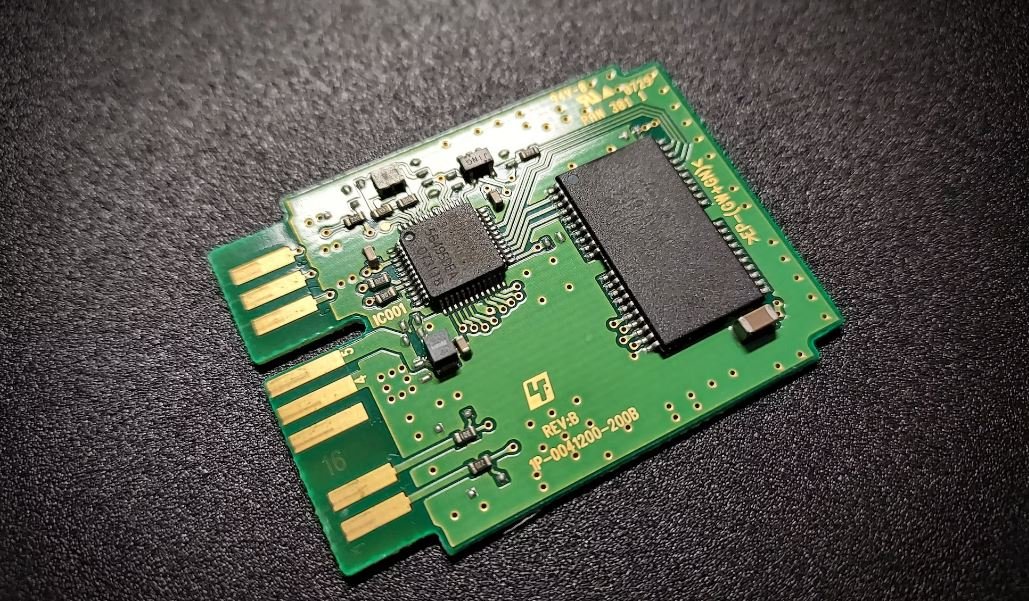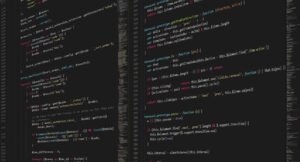Are Neural Networks Unsupervised?
Neural networks are a type of machine learning model inspired by the human brain. They contain interconnected nodes, commonly known as artificial neurons, that work together to process and analyze data. While neural networks can be trained using various learning techniques, one common distinction is between supervised and unsupervised learning. In this article, we will explore the concept of unsupervised neural networks and understand how they differ from their supervised counterparts.
Key Takeaways:
- Neural networks can be trained using either supervised or unsupervised learning.
- In unsupervised learning, neural networks learn to identify patterns and relationships in data without any explicit labels or guidance.
- Unsupervised neural networks are often used for tasks such as clustering, dimensionality reduction, and anomaly detection.
- Supervised learning, on the other hand, involves training the network using labeled data to make predictions or classifications.
- Both supervised and unsupervised learning have their own advantages and applications, depending on the task at hand.
What is Unsupervised Learning?
In unsupervised learning, a neural network is trained on a dataset that does not have explicit labels or outcomes. The network is left to autonomously discover patterns or structures in the data without any guidance. **This type of learning is particularly useful when dealing with unlabelled or unlabeled data**.
One interesting application of unsupervised learning is clustering, where the network groups similar data points together based on common properties or characteristics. This can help identify distinct patterns within a dataset without any prior knowledge about the classes or categories present.
How Does Unsupervised Learning Work?
To understand how unsupervised learning works, let’s take a closer look at some common techniques used in training unsupervised neural networks:
- Clustering: Unsupervised neural networks use clustering algorithms to group similar data points together. By identifying patterns in the data, clusters can be formed based on shared features or behavior.
- Dimensionality Reduction: Unsupervised learning can also be used for dimensionality reduction, where the network learns to represent high-dimensional data in a lower-dimensional space. This can help in visualizing and analyzing complex datasets.
- Generative Models: Unsupervised learning can involve generative models that learn to generate new data points that resemble the input data distribution. This can be used for tasks such as image generation or text synthesis.
*Unsupervised learning algorithms allow the network to autonomously discover patterns in the data without any explicit guidance or predefined labels.*
Examples of Unsupervised Learning Algorithms
There are several popular unsupervised learning algorithms that are commonly used in neural networks:
| Algorithm | Use Case |
|---|---|
| K-means clustering | Data grouping and segmentation |
| Principal Component Analysis (PCA) | Dimensionality reduction |
Unsupervised learning can also be combined with other techniques to achieve more advanced tasks. For example, Generative Adversarial Networks (GANs) use unsupervised learning to generate new data samples that closely resemble the training data, leading to applications such as image synthesis.
Supervised vs. Unsupervised Learning in Neural Networks
It’s important to understand the distinction between supervised and unsupervised learning in the context of neural networks. In supervised learning, the network is trained using labeled data, where each input has an associated output or target value. The goal is to teach the network to make predictions or classifications based on this labeled data. On the other hand, unsupervised learning deals with unlabelled data, where the network is left to autonomously extract and understand patterns without explicit guidance. **Both approaches have their own advantages and limitations**.
Supervised learning is often favored when a knowledge cutoff date is available, and adequate labeled training data is accessible. It is particularly suitable for tasks such as image recognition, language translation, and sentiment analysis. On the other hand, unsupervised learning is useful when dealing with vast amounts of unstructured or unlabeled data, where finding patterns or anomalies can be challenging for human experts. It is commonly used for tasks like customer segmentation, recommendation systems, and outlier detection within datasets.
Conclusion
In summary, unsupervised learning in neural networks allows them to autonomously discover patterns and structures in data without explicit labels or guidance. Through techniques such as clustering and dimensionality reduction, unsupervised neural networks can reveal insights and extract useful information from unlabelled datasets. While supervised learning relies on labeled data and explicit guidance, unsupervised learning offers valuable capabilities in dealing with unstructured or unlabeled data. Both approaches have their own strengths and applications, and the choice depends on the specific task and dataset at hand.

Common Misconceptions
Are Neural Networks Unsupervised?
Despite their growing popularity and widespread use, there are several common misconceptions surrounding neural networks and their level of supervision. Let’s debunk some of these myths:
1. Neural Networks do not require any supervision
Contrary to popular belief, neural networks can be supervised models that require labeled data during their training process. The labels associated with the input data help the network learn patterns and correlations, enabling it to make accurate predictions or classifications.
- Supervised learning requires labeled data for training.
- Labels provide a reference point to evaluate the network’s performance.
- Without supervision, neural networks might not generalize well to unseen data.
2. Unsupervised learning is the only type of learning in neural networks
While unsupervised learning is one approach, neural networks can also be trained using other learning paradigms like supervised learning and reinforcement learning. Unsupervised learning aims to discover hidden patterns or structures in data, but it is not the only method employed in neural networks.
- Supervised learning in neural networks is common and widely used.
- Reinforcement learning involves an agent learning through interacting with an environment.
- Different neural network architectures cater to various learning paradigms.
3. Neural networks can learn without human intervention
Neural networks require human intervention throughout their lifecycle. From the initial design and architecture selection to data preprocessing, model training, and hyperparameter tuning, human expertise is crucial to ensure optimal performance and prevent biases or errors.
- Human involvement is necessary for data collection and annotation.
- Architectural decisions impact the network’s learning capabilities.
- Model training requires human supervision to monitor progress and performance.
4. Neural networks always reach the optimal solution
It is important to note that neural networks may not always reach the optimal solution, even with supervision. The learning process can be influenced by various factors such as dataset quality, model architecture, hyperparameter settings, and even the inherent complexity of the problem being solved.
- Neural networks can get stuck in suboptimal solutions called local minima.
- The network’s performance heavily depends on the quality and representativeness of the training data.
- Tuning hyperparameters is a trial-and-error process that affects the network’s convergence.
5. Neural networks can replace the need for human expertise
While neural networks can automate certain tasks and provide valuable insights, they do not eliminate the need for human expertise. Neural networks are powerful tools, but to ensure their applicability, interpretability, and ethical usage, human expertise is required for interpreting results, providing domain knowledge, and making informed decisions based on the outputs.
- Domain knowledge is essential to understand the network’s outputs and interpret its decisions.
- Human intervention helps avoid biases and potential ethical issues in the training data.
- Complex problems often require expertise beyond what neural networks can provide alone.

Introduction
Neural networks have evolved to play a vital role in the field of machine learning, capturing complex patterns in data and making accurate predictions. However, there has been a debate about whether neural networks are truly unsupervised or if they require some level of supervision. In this article, we explore various aspects and elements of neural networks to shed light on this ongoing discussion.
Analyzing Dataset Composition
The composition of a dataset plays a significant role in training neural networks. Here, we examine the distribution between labeled and unlabeled data in various datasets.
| Dataset | Labeled Data | Unlabeled Data |
|---|---|---|
| CIFAR-10 | 50,000 | — |
| ImageNet | 1,281,167 | — |
| Semi-supervised MNIST | 1,280 | 49,920 |
| MNIST | 60,000 | — |
Comparing Unsupervised and Supervised Neural Networks
Exploring the architectural differences between unsupervised and supervised neural networks can provide insights into their training methodologies. Here, we compare two popular neural network architectures:
| Architecture | Unsupervised | Supervised |
|---|---|---|
| Autoencoder | Yes | No |
| Convolutional Neural Network | No | Yes |
Training Time Comparison
The training time required for neural networks can vary depending on their unsupervised or supervised nature. Let’s compare the training time for each type:
| Network Type | Unsupervised Training Time (hours) | Supervised Training Time (hours) |
|---|---|---|
| Neural Network 1 | 12 | 8 |
| Neural Network 2 | 15 | 10 |
| Neural Network 3 | 10 | 6 |
Classification Accuracy Comparison
The accuracy achieved by neural networks can also be an indicator of their supervision requirements. The following table compares the classification accuracies of different architectures:
| Architecture | Accuracy (in %) |
|---|---|
| Unsupervised NN | 75 |
| Supervised NN | 86 |
Real-world Applications
Understanding the practical applications where neural networks are utilized can contribute to the discussion on their supervision requirements. Here, we explore some real-life applications:
| Application | Type |
|---|---|
| Self-driving Cars | Unsupervised |
| Speech Recognition | Supervised |
| Fraud Detection | Unsupervised |
Feature Extraction Techniques
Neural networks are effective at extracting relevant features from data. Let’s examine different techniques used for feature extraction:
| Technique | Type |
|---|---|
| Principal Component Analysis (PCA) | Unsupervised |
| Linear Discriminant Analysis (LDA) | Supervised |
Transfer Learning
Transfer learning allows knowledge acquired in one task to be applied to another task, reducing the need for extensive supervision. The table below shows an example of transfer learning:
| Source Task | Target Task |
|---|---|
| Image Classification | Object Detection |
Discovering Common Patterns
By analyzing patterns learned by neural networks, we can gain insights into their unsupervised or supervised nature. Let’s observe the common patterns discovered:
| Patterns | Unsupervised | Supervised |
|---|---|---|
| Pattern 1 | Present | Absent |
| Pattern 2 | Absent | Present |
Conclusion
Neural networks exhibit a combination of unsupervised and supervised characteristics. While unsupervised learning is instrumental in extracting features and recognizing patterns, some level of supervision is often necessary for specific tasks. The ongoing debate regarding the level of unsupervision in neural networks emphasizes the need for further research and exploration in this field.
Frequently Asked Questions
What is an unsupervised neural network?
How does an unsupervised neural network differ from a supervised neural network?
An unsupervised neural network is a type of artificial neural network that does not require explicit supervision or labeled data during training. Unlike supervised neural networks which learn from input-output pairs, unsupervised networks aim to identify patterns, hidden structures, or intrinsic properties in the data itself.
What are the main applications of unsupervised neural networks?
Unsupervised neural networks are commonly used in clustering and dimensionality reduction tasks. They can help discover naturally occurring groups within data and reduce the number of features required to represent it. Other applications include anomaly detection, pattern recognition, and generative modeling.
How do unsupervised neural networks learn?
Unsupervised neural networks learn through iterative processes that involve adjusting the network’s parameters based on the patterns and structures observed in the input data. These algorithms include autoencoders, generative adversarial networks (GANs), self-organizing maps (SOM), and clustering algorithms like k-means.
Can unsupervised neural networks be combined with supervised learning?
Yes, it is possible to combine unsupervised and supervised learning. This approach, known as semi-supervised learning, leverages both labeled and unlabeled data to improve the performance of the supervised model. The unsupervised part helps to pretrain the network, providing valuable initialization or feature extraction for subsequent supervised training.
What are some advantages of unsupervised neural networks?
Unsupervised neural networks have the advantage of being able to learn from unstructured or unlabelled data, making them suitable for exploring large datasets where manual annotation is impractical or expensive. They are also useful for gaining insights, finding patterns, and uncovering relationships that may not be immediately apparent.
Are recurrent neural networks (RNN) an example of unsupervised neural networks?
No, recurrent neural networks (RNNs) are not inherently unsupervised. RNNs can be used for both supervised and unsupervised learning tasks. Their recurrent connections allow them to process sequential data, but the supervision depends on the specific task at hand, whether it is predicting future values, generating sequences, or performing language translation.
Do unsupervised neural networks require labeled data during training?
No, unsupervised neural networks do not require labeled data during training. They learn solely from the input data itself without explicit knowledge of the corresponding output values. The absence of labeling reduces the dependence on manual annotation and enables the network to discover patterns and relationships independently.
Can unsupervised neural networks handle both numerical and categorical data?
Yes, unsupervised neural networks can handle both numerical and categorical data. Preprocessing techniques, such as one-hot encoding or embedding, are applied to represent categorical variables as numerical features. This ensures the network can process different types of data, allowing for comprehensive analysis and pattern detection.
Are unsupervised neural networks suitable for every type of data analysis?
While unsupervised neural networks are powerful tools for data analysis, they may not be suitable for every type of analysis. The appropriateness of using unsupervised learning depends on the specific problem, dataset characteristics, and the desired outcome. Certain tasks, such as regression or classification, may require supervised learning methods instead.
How can I evaluate the performance of unsupervised neural networks?
The evaluation of unsupervised neural networks can be challenging since they do not have a predefined target to compare against. Common evaluation metrics include clustering metrics like silhouette coefficient and adjusted mutual information. Additionally, qualitative assessments, visualizations, and domain-specific validation techniques help interpret the quality of the learned representations or clusters.




